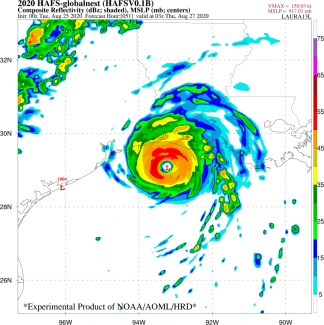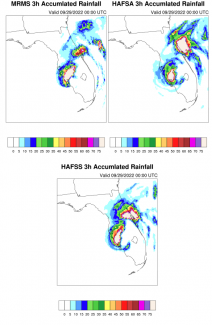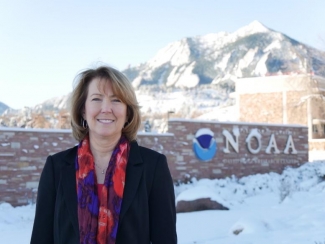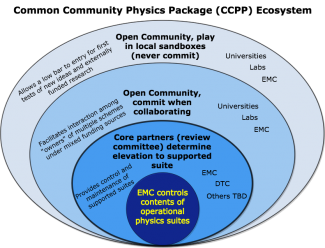Xia Sun is a numerical weather prediction (NWP) scientist working at the Cooperative Institute for Research in Environmental Sciences at the University of Colorado Boulder (CIRES) and NOAA Global Systems Laboratory. Xia works on hierarchical system development for the Unified Forecast System (UFS) and MYNN-EDMF planetary boundary layer (PBL) physics scheme. Before that, Xia lived in Reno, Nevada for three and half years to finish her Ph.D program in Atmospheric Sciences at University of Nevada, Reno. Xia has a research background in land-atmospheric interactions, chemical transport modeling, and boundary layer meteorology.
Xia spent her early childhood in a town in North China Plain. Once she was ready to attend middle school, she attended boarding school where she flourished and cultivated independence at a young age. She began keeping detailed journals to document her boarding school experiences, which she shared with her family as a way of painting a picture of her life that would later become an archive of her cherished memories from her earlier life.
Xia always wanted to work in the meteorology field, even when she was little. Her interest began when she would visit her aunt’s workstation at a weather modification office in a local meteorological bureau when she was only about six years old. She was particularly fascinated by the potential impacts that weather modification (through cloud seeding) might have on our lives. Motivated by these interests, she pursued a major in Atmospheric Physics in college.
Xia’s typical work day at her NOAA job involves code development and data visualization and analysis. She enjoys collaborating with her colleagues, exchanging ideas, and brainstorming together. Xia is currently working on projects focused on improving simulated marine boundary-layer cloud morphology and wind-forecast improvement along the east coast. The project Xia is working on at DTC and serves as a co-lead is applying a hierarchical approach, from simple to complex systems, to improve the deterministic and stochastic parameterizations. She uses a single-column model driven by a forcing dataset post-processed from high-resolution model simulations to investigate model uncertainty and inform stochastic parameterizations development.
The most fulfilling part of Xia’s job is knowing the positive impacts NWP scientists have on society. More accurate weather forecasts contribute to public safety and the well-being of people. The work of NWP scientists involves collaborating to advance our understanding of the complex behaviors of the atmosphere to refine and improve the model, drawing knowledge from disciplines such as physics, mathematics, and chemistry, among others. The collaborative environment makes the job dynamic and engaging. The intellectual stimulation through the community collaboration is another rewarding aspect of her work.
In her spare time, Xia likes to hike in the Colorado mountains with her family, weather permitting, of course. Hiking reminds her of the importance of perseverance, respect for nature, and the reward of beautiful views that cannot be seen elsewhere. Xia also loves visiting theme parks and national parks with her family and friends. Theme park visits make beautiful memories for the whole family, especially for Xia’s daughter, Mira. National parks offer an adventure that allows one to connect with the natural world and enjoy the breathtaking views of mother nature.







